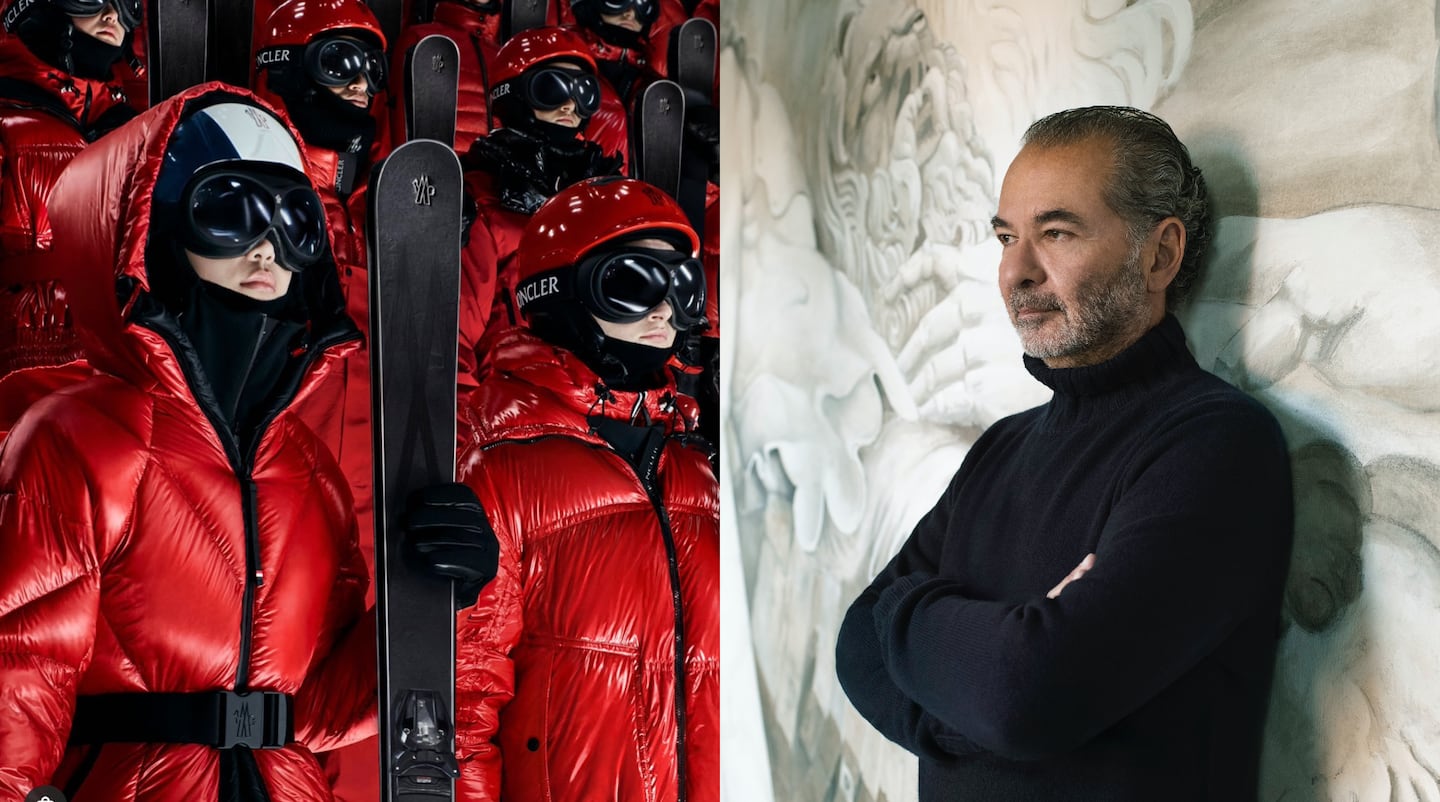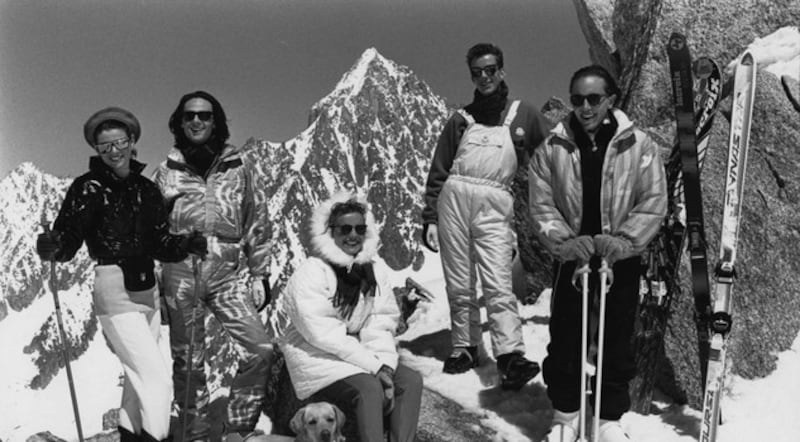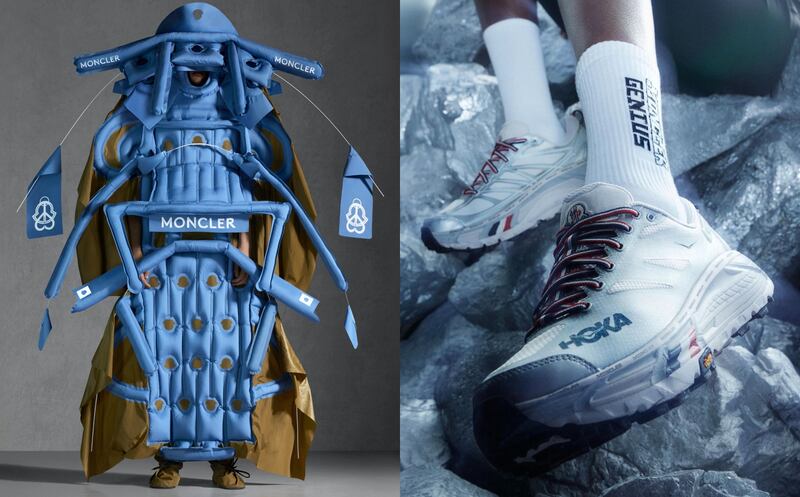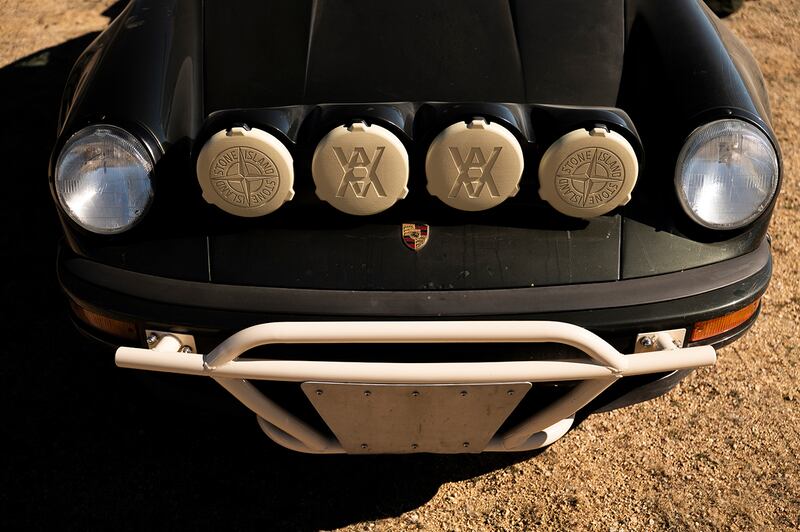
The Business of Fashion
Agenda-setting intelligence, analysis and advice for the global fashion community.

Agenda-setting intelligence, analysis and advice for the global fashion community.

MILAN — On a recent Sunday hike through the canyons above Bel Air, California, Remo Ruffini was surprised to see how packed the trails were with well-to-do, sporty Millennials, who increasingly spend their time (and money) on hiking and mountain sports.
“I was shocked,” said Ruffini, who is the chairman and chief executive of Italian outerwear giant Moncler. “I saw more people I knew there than I do on Rodeo Drive,” the luxury shopping hub where his brand has its Los Angeles flagship.
Not enough of those people, it seems, were wearing Moncler.
In the past four years, the brand has expanded and engaged its audience with non-stop collaborations with hip designers, rolling out as many as eight capsule collections per year as part of a sweeping marketing initiative dubbed “Genius.”
ADVERTISEMENT
But while Moncler’s slick luxury positioning — situated between sportswear and runway fashion — has seen revenues surge, the pace of buzzy fashion collaborations risked stealing the spotlight from the brand’s heritage in outdoor sports. Many Millennial shoppers who have taken to wearing shells, fleeces and other technical apparel from the trail to the streets are opting for labels like Arc’Teryx, Patagonia and The North Face.
Now, Ruffini is focused on catching this wave of consumer interest, relaunching Moncler’s skiwear imprint Grenoble with an emphasis on selling technical apparel for mountain sports to active Millennials. “We come from this world,” he said. “We are one of the brands who is really legitimate to focus on the mountain.”
Relaunching Grenoble isn’t the only change in the works for Moncler: Speaking ahead of the company’s first investor day in four years, Ruffini laid out plans to reconfigure its brand structure, expand its retail footprint with new stores for both the Moncler brand and recent acquisition Stone Island, and accelerate diversification by investing in footwear.

The strategy comes as the company seeks to keep up growth after sales rebounded sharply from the pandemic. In the first quarter of 2022, Moncler’s sales rose 29 percent, the company said, while Stone Island grew 32 percent. Both labels beat analyst estimates. At its investor event Thursday, the company said it would carry out 100 store openings, relocations, and expansions for the Moncler brand over three years.
Overall, group revenues surpassed €2 billion ($2.12 billion) last year, almost four times higher than when Moncler went public in 2013.
Still, the company relies heavily on a few flagship items like its €1050 Moncler Maya jacket. And the outlook for 2022 is growing more uncertain amid rapid inflation, the return of coronavirus lockdowns in China and Russia’s invasion of Ukraine.
“We would not anticipate meaningful consensus upgrades post 1Q22 results, as the outlook is likely to be overshadowed by headwinds in China and challenging comparatives in 2Q22,” wrote RBC analyst Piral Dadhania, who has an “underperform” rating on the stock, pointing to a high valuation relative to expected sales and profit. “Moncler remains a high quality luxury business with category leading credentials in outerwear, however [its] current setup leaves little room for error.”
After pouring resources into its Genius initiative, whose 2018 launch promised a new marketing strategy for a world where consumers crave newness at the speed of Instagram, Moncler plans to temporarily wind down the program so it can redirect investment and marketing to its main line in addition to the Grenoble relaunch. Those core projects will benefit from a fast pace of activations from late September through the end of the year, Ruffini said, as the brand plans to spotlight its heritage as part of a 70th-anniversary push.
ADVERTISEMENT
Genius’ 1952 line, a seasonal range designed by in-house creative director Sergio Zambon, will be absorbed back into the main collection, which is set to introduce more creative products — as well as a line of logo-free items — alongside hit carryovers like its Maya jacket and zip-up hoodies. Partnerships with former Apple designer Jony Ive and the Lebron James Foundation are also in the pipeline.
Genius is slated to relaunch next year with a focus on targeting Gen-Z customers, and will seek a cast of collaborators from other industries like entertainment and sports rather than partnering exclusively with fashion designers.
Under the Genius umbrella, sculptural, samurai-esque ensembles by Craig Green and floor-length puffer mummy gowns by Pierpaolo Piccioli drove online buzz and raised Moncler’s fashion clout. Tapping Japanese streetwear and nightlife maven Hiroshi Fujiwara for limited-edition collabs with his Fragment line sparked sell-out demand from hypebeasts, while a few Genius partnerships, like the ones with Italian streetwear outfit Palm Angels, actually ended up driving significant sales, too.
Ruffini credits the Genius program with instilling a culture of digital-first, “always on” marketing throughout the company, as well as bringing younger consumers into the brand.

But while those initiatives boosted Moncler’s audience and helped preserve a hard-won fashion positioning (prior to Genius, Moncler sold seasonal ready-to-wear lines by Giambattista Valli and Thom Browne), they didn’t address the brand’s reliance on a handful of hero products, like the Maya. What’s more, the collabs risked confusing consumers about the brand’s core identity and values, and often did more to raise the profiles of collaborators than to spotlight Moncler itself.
Genius has been a success in terms of “communicating through product, in a very fast way,” according to Paola Cillo, professor of innovation and coordinator of the luxury concentration at Milan’s Bocconi University. “It brought a sense of speed and dynamism to the brand. But from a business point of view I don’t see where this is heading,” she said. “They still need to enlarge their codes, enlarge the number of items they actually sell.”
While Moncler has seen success with some ready-to-wear like cut-and-sewn streetwear pieces, efforts to ramp up categories like accessories and shoes have advanced more slowly. Moncler carries a full lifestyle offer, including backpacks, eyewear and even perfume, but those categories still make up a small share of sales.
Contrary to most luxury rivals, Moncler won’t make bags a focus. “I don’t see the match with our brand,” Ruffini said.
ADVERTISEMENT
Instead, footwear is where Moncler is placing its bets: The company sees surging demand for luxury sneakers in the US as former office workers divert spending from traditional leather-soled shoes for good. A new chief brand officer hired from sneaker giant Nike, Gino Fisanotti, could help drive success in the category.
A recent collaboration with Hoka provided an in-road to the market, and was a near-instant sell-out, Ruffini said.

Of course, Moncler’s biggest push to diversify is at Stone Island, which the company acquired in a $1.4 billion dollar deal last year. There, the company is working to slash distribution deals and roll out more directly operated stores, targeting 100 locations by the end of 2024, up from just 30 at the time of the transaction.
“The product is amazing, but to change the culture is key. A DTC approach is a must,” Ruffini said. In addition to improving the store concept and online flagships, sharper, more modern marketing will be needed to broaden the brand’s audience while holding onto its authentic, tribal appeal.
The Stone Island deal sparked speculation that Ruffini could become a consolidator in the Italian fashion market, alongside players like OTB chairman Renzo Rosso, who has beefed up his portfolio since the pandemic.
Supply-chain acquisitions could figure into the brand’s plans, particularly as it seeks to boost its presence in footwear, and as concerns over sustainability and speed-to-market fuel a shift to producing a greater share of items in house. The brand plans to lift its own manufacturing to 30 percent of sales, compared to around 15 percent today.
Acquiring additional brands is “not part of the strategy” for the coming years, however, as the Stone Island integration and Moncler revamp steal focus. “I don’t think we have the time,” Ruffini said.
Editors’ Note: This story has been modified on 5th May, 2022 at 14:45 BST. Updates from paragraph 9 to include comments on Moncler’s retail expansion, supply chain targets.
Cult sportswear brand Stone Island found a sweet spot in the age of luxury streetwear. With a €1.15 billion euro deal to acquire the label, Moncler is opening the door to become a multi-brand group.
Gino Fisanotti, Nike’s former brand creative officer, will join Moncler as chief brand officer from June 7. The newly created position will report
The Italian brand is replacing its seasonal partnerships with Thom Browne and Giambattista Valli with monthly collaborations with guest creatives, including Valentino’s Pierpaolo Piccioli, Craig Green and Simone Rocha.

Robert Williams is Luxury Editor at the Business of Fashion. He is based in Paris and drives BoF’s coverage of the dynamic luxury fashion sector.
IWC’s chief executive says it will keep leaning into its environmental message. But the watchmaker has scrapped a flagship sustainability report, and sustainability was less of a focus overall at this year’s Watches and Wonders Geneva.
The larger-than-life Italian designer, who built a fashion empire based on his own image, died in Florence last Friday.
This week, designers, collectors and major fashion brands will flock to Milan’s design fair. Also, LVMH reports first-quarter sales.
The Italian designer, best known for vibrant animal prints and sand-blasted denim, was 83.